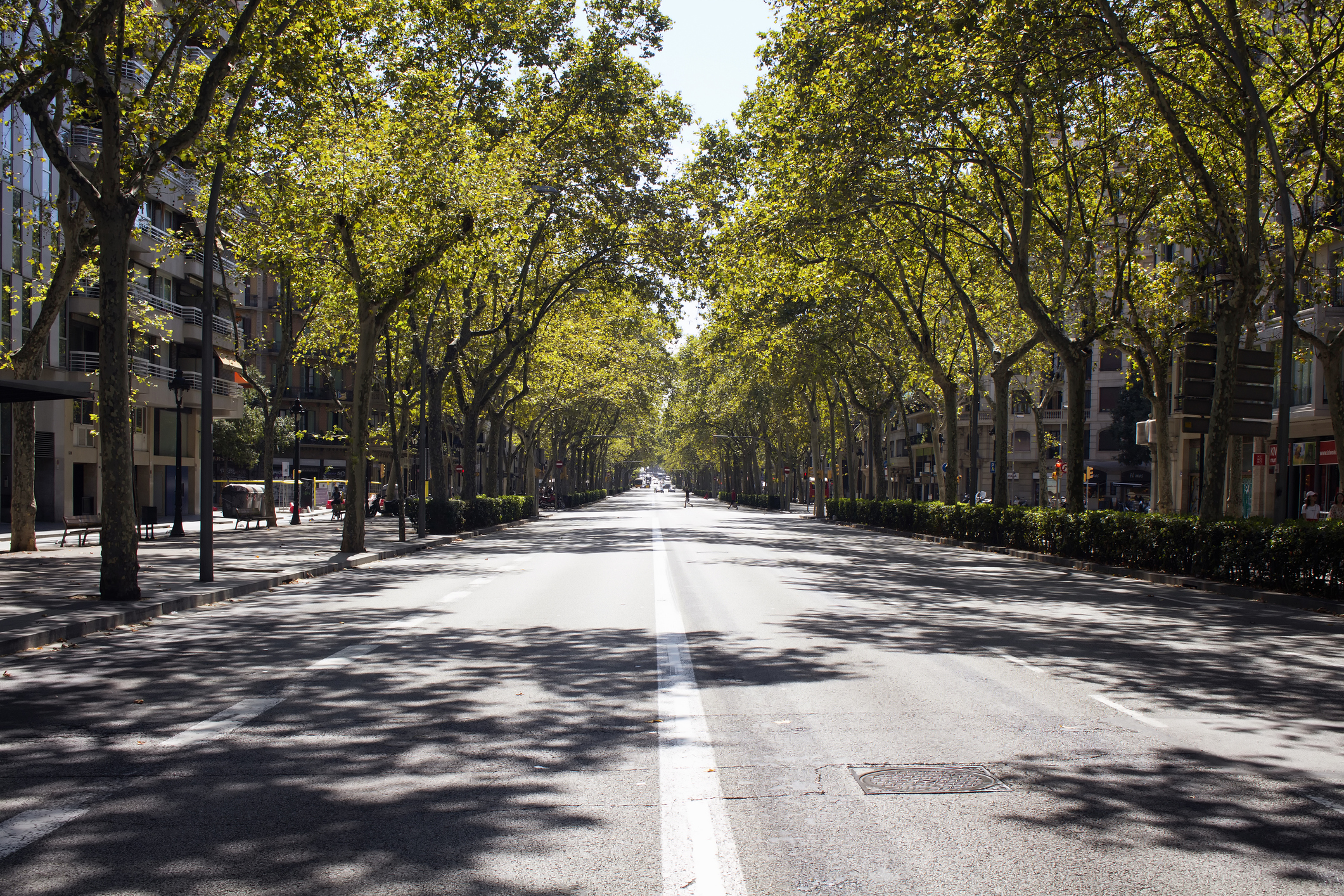
Living in a city sometimes feels like living in the future. Urban life can mean exposure to new technologies, new ideas—and, sometimes, previews of the temperatures coming soon to nearby regions. In Europe, during hot periods, cities are an average of 2.7°F (1.5°C) warmer than surrounding areas, according to research published Jan. 31 in the Lancet. That amount may sound small, but scientists have also pinpointed it as the increase above pre-industrial temperatures that humanity will have to stick to for the best-case climate-change scenario.
These so-called urban heat islands can be deadly, especially as heat waves become more frequent in high-density places around the world. In summer 2022, urban areas across Europe clocked record-breaking highs, and 26 U.S. cities recorded their hottest ever seasons. The result is a public health crisis for cities not designed to withstand extreme heat. “London could be as hot as Barcelona in 20 years’ time if we’re not careful, and Barcelona could be like Marrakech,” says Mark Nieuwenhuijsen, the study’s co-author and director of urban planning, environment, and health at the Barcelona Institute for Global Health.
Cities really need to chill out, and while adding air conditioning is more likely to contribute to global warming than it is to fix it, the study models a more sustainable approach. The paper, which includes data from 93 European cities, found that in 2015, more than 4% of summertime deaths in those cities could be traced back to the effects of urban heat islands. But when researchers adjusted the model to reflect a hypothetical, much leafier Europe—with 30% of city spaces shrouded by trees—the number of heat-related deaths dropped by more than a third.
Modeling cities that are 30% shaded by trees isn’t random; it’s an actual target that many European cities are working towards, and that some, like Oslo, have already achieved. But with a current average coverage of 14.9%, many cities in warmer areas—for instance, Split, Croatia (5.4%); Paris (9%); and Lisbon (3.6%)—have a ways to go. (For comparison, in the U.S., New York City’s tree cover clocked in at 22% in 2017.)
Read More: Cow Burps Have a Big Climate Impact. Solving That is Harder than You’d Think
Trees provide more cooling services than just shade. Leaves are full of water, and when it gets hot out, that water evaporates and fizzles into the warm air, causing a cooling effect not unlike a microscopic mist. Then, there are the less measurable implications of additional tree coverage in an area. “Where you have trees, you don’t have roads,” says Nieuwenhuijsen, and every inch without asphalt matters. The problem of asphalt is multifold, he explains. Aside from slurping up every ounce of daytime sunlight and releasing its warmth gradually, often hijacking otherwise-cooler night air, asphalt means cars. About 60% of the energy that fossil-fuel powered cars release is in the form of heat.
“If asphalt is an indicator for having more cars, generally, trees are an indicator for having a more livable area,” Nieuwenhuijsen adds. In Barcelona, which has a thriving bus system, only one out of every four transit trips is by car, yet those very vehicles take up 60% of the city’s space.
For some cities that were originally designed with cars in mind—only 12.4% of Phoenix, Ariz., was covered by trees when it began a 2010 greening project—reaching 30% tree coverage could mean undertaking a fundamental redesign of certain city spaces and the ways that people move within them. “Having more trees in urban areas makes them more thermally comfortable and safer. But I would add that it’s also important that we use the right species of trees and put them in the right locations in order to maximize the effect,” says Robert Brown, a professor of landscape architecture and urban planning at Texas A&M University, who was not involved with the study. Trees in urban areas already face higher risks of dying in their first few years after being planted, and with limited local budgets, there’s a good case for prioritizing species that can easily thrive in the neighborhoods where they’re needed most.
Heat is the leading weather-related killer, but death is only the most extreme measure of the health toll that increased temperatures can take. Heat can also put a major strain on mental health, in part by potentially impairing sleep. Tree coverage wouldn’t just keep more people alive, Nieuwenhuijsen argues—it could make those lives better day-to-day.
Cities with limited budgets should also remember to care for the green spaces that they do already have, says Nieuwenhuijsen. And additional greening doesn’t always have to mean a lush new 10-block park. The relationship between tree coverage and preventable deaths demonstrated in the study is linear, which means that every bit helps.
More Must-Reads From TIME
- The 100 Most Influential People of 2024
- The Revolution of Yulia Navalnaya
- 6 Compliments That Land Every Time
- What's the Deal With the Bitcoin Halving?
- If You're Dating Right Now , You're Brave: Column
- The AI That Could Heal a Divided Internet
- Fallout Is a Brilliant Model for the Future of Video Game Adaptations
- Want Weekly Recs on What to Watch, Read, and More? Sign Up for Worth Your Time
Contact us at letters@time.com